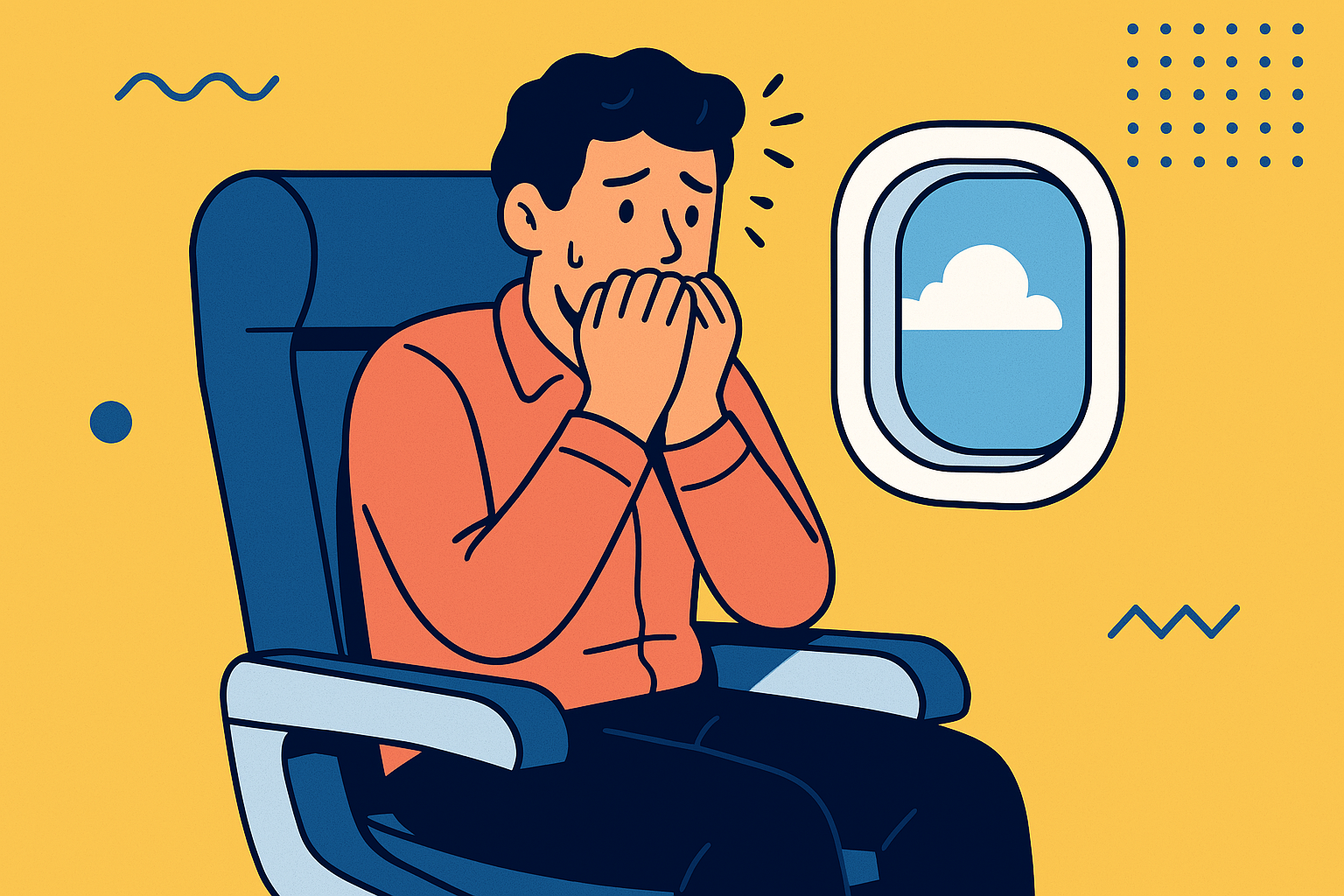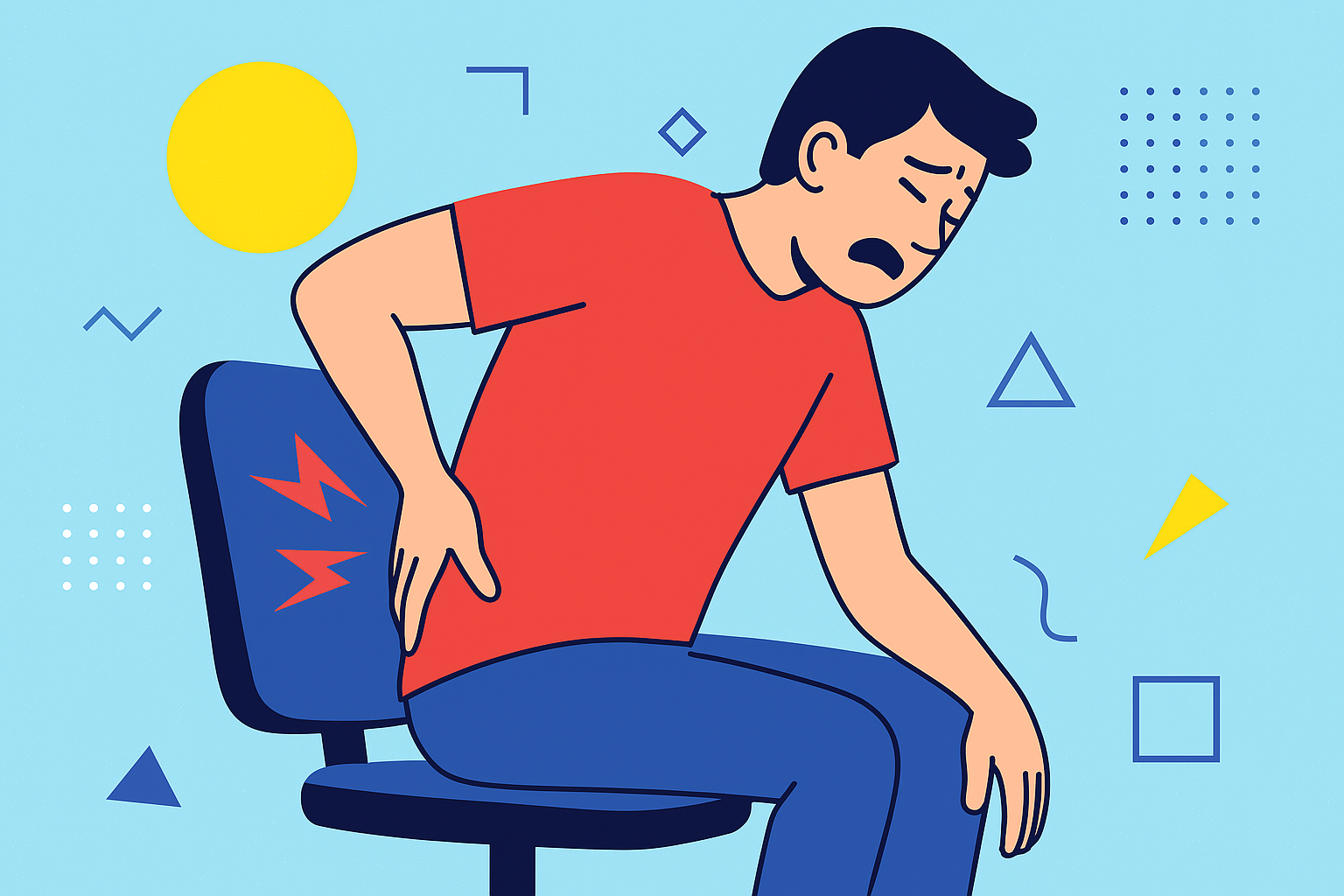Airplanes are one of the safest modes of transportation, but tell that to your nervous system. For many of us, the mere thought of boarding a flight can trigger racing thoughts, clammy hands, or the urge to cancel the trip altogether. Whether it’s the fear of turbulence, claustrophobia, or just feeling out of control, flying anxiety is a common and frustrating challenge. But what if you could approach it like any other behavioral goal? If you’re someone who loves habits, data, and incremental progress, there are better ways to fly—literally and mentally.
In this post, we’ll break down why planes cause anxiety, and give you specific strategies tailored to short, medium, and long flights. We’ll also walk you through a 30-day plan to build a powerful pre-flight ritual that reconditions your brain for calm. By the end, you’ll not only have a new toolbox for travel but also understand how the 30 Day Habits AI Coach can help you make calm, confident flying your new normal.
Why Planes Make Us Anxious
The human brain isn’t wired for flight—at least not the kind that involves jet engines and 35,000 feet. Our anxiety response is triggered when we sense a loss of control or face perceived danger, even if the data tells a different story. Add in crowded cabins, long waits, and the occasional turbulence bump, and you’ve got the perfect recipe for stress.
Table 1: Common Triggers of Flight Anxiety
| Trigger | Why It Affects You |
|---|---|
| Turbulence | Feels like danger, even though it’s usually harmless |
| Claustrophobia | Limited personal space can trigger panic |
| Loss of Control | Not being the one flying the plane induces helplessness |
| Delays or Uncertainty | Unexpected changes heighten stress response |
| Media Exposure | Negative news stories can distort risk perception |
The good news? These triggers are manageable when you treat anxiety like a habit loop—something that can be interrupted, redirected, and reshaped over time.
Strategies by Flight Duration
When approaching plane anxiety, context matters. What works for a one-hour hop won’t cut it for a red-eye to Tokyo. Below, you’ll find strategies categorized by trip length. Each approach builds on your brain’s love of routines, rewards, and gradual exposure.
Short Flights (Less than 2 hours)
For short flights, the goal is to reduce anticipatory anxiety and focus on calming rituals. You don’t have much time in the air, so you want to front-load relaxation techniques.
Start with a light pre-flight meal and avoid caffeine. Practice deep breathing (like box breathing: inhale 4 seconds, hold 4, exhale 4, hold 4) starting at the gate. As you board, shift your attention using grounding exercises: name five things you see, four you can touch, three you hear, two you smell, and one you taste.
Choose an aisle seat if claustrophobia is an issue. Download a favorite podcast or a calming playlist—not just any one, but something associated with safety or joy. A 20-minute guided meditation or a fiction audiobook can help anchor your nervous system.
Medium Flights (2 to 6 hours)
For mid-range flights, you’ll want a layered strategy. Begin the day with some light exercise—a brisk walk or short yoga flow reduces baseline cortisol. At the airport, arrive early to reduce the stress of rushing and give your body time to adjust to the environment.
Once in your seat, break the flight into time blocks. For example, divide a 4-hour flight into 30-minute windows: reading, music, meditating, eating a snack, watching a show, journaling, and then looping that cycle. Predictability reduces fear.
If possible, invest in noise-canceling headphones. They help isolate you from the sensory overload of engines and crying toddlers, two sneaky contributors to stress. Hydrate regularly, but avoid alcohol, which can increase anxiety once its initial effects wear off.
Long Flights (6+ hours)
Long-haul travel is an endurance game. Preparation starts 48 hours before. That means getting good sleep, minimizing caffeine and sugar, and mentally rehearsing the flight using visualization.
Pack items that give you a sense of home and safety: a favorite hoodie, an eye mask, or even a small scent roller with lavender or peppermint oil. Try to mirror your sleep schedule to your destination’s timezone to minimize the shock of jet lag.
In flight, treat it like a series of manageable sprints. Alternate between movement, entertainment, and calm. Use a smartwatch or phone alarm to remind you to walk the aisles or stretch every hour. Engage your brain with puzzles or documentaries that require attention but not stress.
Table 2: Flight Duration Strategy Map
| Flight Type | Core Strategy |
|---|---|
| Short (<2 hrs) | Grounding, Breathing, Distraction |
| Medium (2-6 hrs) | Time Blocking, Sensory Management |
| Long (6+ hrs) | Pre-Flight Prep, Sleep Cycling, Movement Routines |
30 Days to a Calm Pre-Flight Ritual
One of the most powerful ways to manage flight anxiety is to create a pre-flight ritual that becomes second nature. This ritual acts like a mental runway, guiding your nervous system into a state of calm before takeoff. Over 30 days, you can use repetition, habit stacking, and reflection to make this your default mode.
Week 1 is all about awareness. Each day, spend five minutes journaling about past flight experiences and rating your anxiety level from 1-10. Add in a one-minute breathing exercise at the same time each day, right after brushing your teeth or pouring your coffee.
Week 2 shifts toward preparation. Start adding visualization to your routine—imagine yourself walking through the airport, boarding calmly, and enjoying the flight. Use actual flight sounds in the background to make the visualization more powerful. Begin listening to your travel playlist or calming podcast during your morning commute to condition a relaxation response.
Week 3 introduces environment control. Declutter your travel gear, lay out your travel outfit, and prep a go-to comfort kit with headphones, snacks, and a calming scent. Practice your breathing and grounding techniques in different settings—like a noisy mall or while in line at the grocery store.
Week 4 is the full simulation. Choose one day to run your pre-flight ritual from start to finish as if you were flying: wake up at your intended travel time, do your breathwork, eat your travel meal, listen to your playlist, and even drive to the airport (or simulate it by walking with your luggage around the block). Each step helps encode a positive association with the flight experience.
By day 30, you’ve trained your mind to see air travel as a routine challenge, not a crisis. That’s habit science at its best.
How the 30 Day Habits AI Coach Helps You Build Your Pre-Flight Ritual
The 30 Day Habits AI Coach is your personalized co-pilot for designing a calm, consistent pre-flight ritual. It starts by helping you define a clear and achievable goal—for example, to follow your full pre-flight routine without skipping a day for 30 days. Based on your schedule and stress profile, it tailors a daily micro-practice to build confidence step by step.
As you check in each day, the AI Coach learns from your inputs. It predicts where you might slip—whether that’s skipping visualization, forgetting your scent roller, or rushing the breathing exercise—and adjusts your routine to make it more doable. For instance, if journaling starts to feel like a chore, it might prompt you to switch to a voice note. If your anxiety spikes at night, it might encourage a relaxing sleep cue earlier in your wind-down.
The Coach also sends reminders via SMS and email, timed around your daily patterns, so that your habits become automatic. You won’t forget to breathe at the gate or visualize success the night before—because your Coach keeps you on track.
And when your flight day arrives, the Coach gives you a simplified checklist of your top rituals, customized for the flight length. It’s your data-driven travel companion, helping you walk calmly toward the gate with intention and confidence.
Flying doesn’t have to be fear-filled. With the right mix of habit science, personalized guidance, and thoughtful preparation, you can rewire your brain for calm skies ahead. The 30 Day Habits AI Coach is ready to guide you every mile of the journey.
Ready to fly without fear? Start your calm-flight habit today.





